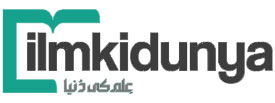-
 Home
Home
-
 News
News
Latest Educational News Stories
Daily update of all national, international news, picture stories, college / university announcements and educational events.
-
 Colleges
Colleges
Pakistan's Largest Database of Colleges and Universities
Explore Largest Directory of Private and Govt. Colleges, Universities and find best institute for your future Education.
-
 Courses
Courses
-
 Admission
Admission
-
 Lectures
Lectures
-
 Online Test
Online Test
Short Question
- 9th Class Physics Short Questions
- 9th Class Chemistry Short Questions
- 9th Class Math Short Questions
- 9th Class Biology Short Questions
- 9th Class Computer Short Questions
- 9th Class English Short Questions
- 10th Class Physics Short Question
- 10th Class Chemistry Short Question
- 10th Class Math Short Question
- 10th Class Biology Short Question
- 10th Class Computer Short Question
- 10th Class English Short Question
-
 Past Papers
Past Papers
-
 Date Sheets
Date Sheets
-
 Results
Results
Exam Results 2024
Check online Results 2024 Matric Inter BA BSc B.Com MA MSc M.Com CSS PCS MCAT ECAT of all educational boards and universities in Pakistan
-
 Study Abroad
Study Abroad
Study Abroad Programs and Opportunities for Pakistani Students
Explore free study abroad search to find programs, consultants, events to study in USA, UK, Australia, China, Malaysia and many others.
-
 Jobs
Jobs
-
 Tutors
Tutors
-
 More
More
-
 Apps
Apps
This online test contains MCQs about following topics:
- Introduction - Operations on Sets - Venn Diagrams - Operations on Three Sets - Properties of Union and Intersection - Inductive and Deductive Logic - Implication or Conditional - Truth Seats, A Link between Set Theory and Logic - Relations - Functions - Inverse of a Function - Binary Operations - Groups - Solution of Linear Equations - Reversal Law of Inverses
MCQ's Test For Chapter 2 "11th Class FSC Mathematics Chapter 2 Test Online"
Try The MCQ's Test For Chapter 2 "11th Class FSC Mathematics Chapter 2 Test Online"
-
Total Questions20
-
Time Allowed30
11th Class Maths Unit 2 Test
Top Scorers Of Chapter 2 "11th Class FSC Mathematics Chapter 2 Test Online" MCQ`s Test
-
M Muhammad Ali 01 - Nov - 2024 00 Min 05 Sec 20/20 -
H Huzaifah Irshad 08 - Jan - 2025 09 Min 07 Sec 20/20 -
M Maidaa Mukhtar 02 - Sep - 2025 12 Min 29 Sec 19/20 -
A Abdulghaffar Sheikh 09 - Nov - 2024 01 Min 56 Sec 18/20 -
Z Zainab Nasir 18 - Nov - 2024 04 Min 40 Sec 18/20 -
N Naeem WahlaD8 07 - Nov - 2024 02 Min 39 Sec 17/20 -
A ASMA FAISAL 26 - Oct - 2024 03 Min 14 Sec 17/20 -
F Faisal Masood 10 - Oct - 2024 03 Min 42 Sec 17/20 -
H Hafsa Hafeez 28 - Sep - 2024 04 Min 17 Sec 17/20 -
S Sara Javed 14 - Nov - 2024 04 Min 30 Sec 17/20 -
M Muqaddas Mahboob 10 - Dec - 2024 02 Min 57 Sec 16/20 -
N noob player 07 - Nov - 2024 03 Min 50 Sec 16/20 -
M Maskman PlaYs 31 - Dec - 2024 05 Min 46 Sec 16/20 -
H Humail Rauf 20 - Jan - 2025 10 Min 32 Sec 16/20 -
A Awais Mughal 18 - Dec - 2024 03 Min 54 Sec 15/20
FSc Part 1 Mathematics (New Book) Chapter 2 Important MCQ's
| Sr.# | Question | Answer |
|---|



















Share your comments & questions here
Please sign in to post a comment
No comments yet. Be the first to comment!